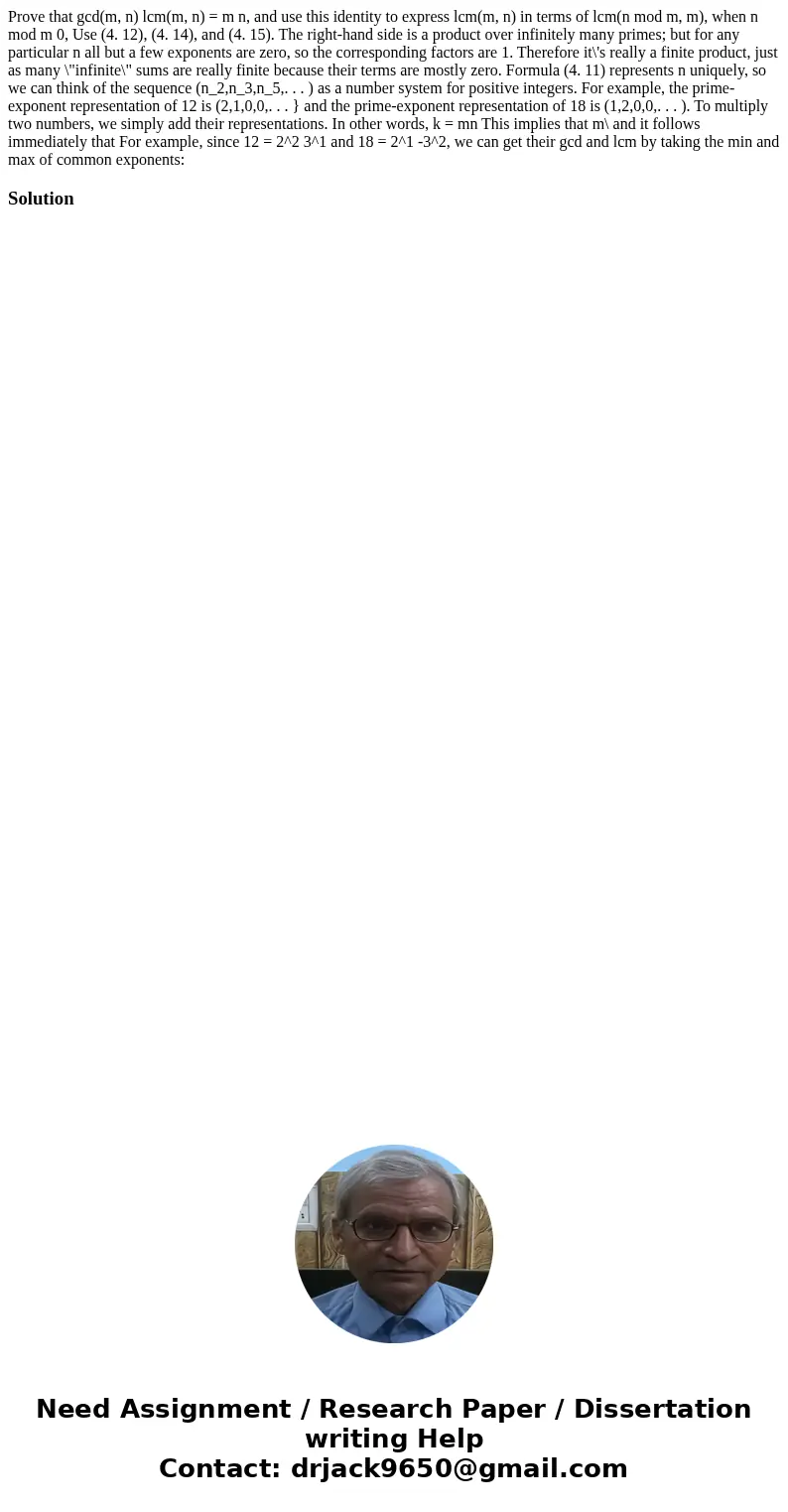Prove that gcdm n lcmm n m n and use this identity to expre
Prove that gcd(m, n) lcm(m, n) = m n, and use this identity to express lcm(m, n) in terms of lcm(n mod m, m), when n mod m 0, Use (4. 12), (4. 14), and (4. 15). The right-hand side is a product over infinitely many primes; but for any particular n all but a few exponents are zero, so the corresponding factors are 1. Therefore it\'s really a finite product, just as many \"infinite\" sums are really finite because their terms are mostly zero. Formula (4. 11) represents n uniquely, so we can think of the sequence (n_2,n_3,n_5,. . . ) as a number system for positive integers. For example, the prime-exponent representation of 12 is (2,1,0,0,. . . } and the prime-exponent representation of 18 is (1,2,0,0,. . . ). To multiply two numbers, we simply add their representations. In other words, k = mn This implies that m\ and it follows immediately that For example, since 12 = 2^2 3^1 and 18 = 2^1 -3^2, we can get their gcd and lcm by taking the min and max of common exponents:
Solution

 Homework Sourse
Homework Sourse